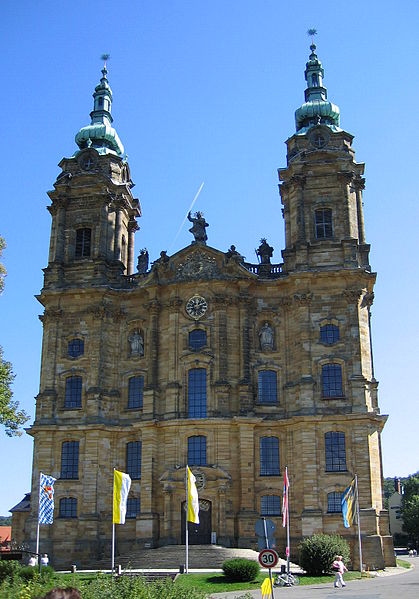Re: Re: reorganisation and destruction of irish catholic churches
Home › Forums › Ireland › reorganisation and destruction of irish catholic churches › Re: Re: reorganisation and destruction of irish catholic churches
I know it’s been covered already but it’s always worth returning for another look at Vierzehnheiligen. . Wunderbar!
Johann Balthasar Neumann
[align=center:11paapl5]
The German architect Balthasar Neumann (1687-1753) created some of the finest baroque buildings of the 18th century for the Schönborn family in central Germany, notably the Residenz in Würzburg and the church of Vierzehnheiligen.
(born 1687, Eger, Bohemia, Austrian Habsburg domain — died Aug. 19, 1753, Würzburg) German architect. Born in Bohemia, Neumann moved to Würzburg in 1711. In 1719 he began work on a new palace for the prince-bishop, Johann Philipp Franz von Schönborn, that was especially noted for its grand staircase. Friedrich Karl von Schönborn, who was elected prince-bishop of Würzburg in 1729, went on to became Neumann’s greatest patron, putting Neumann in charge of all major building projects in Würzburg and Bamberg, including palaces, public buildings, bridges, a water system, and many churches. One of Neumann’s best works was the pilgrimage church at Vierzehnheiligen (1743 – 53). A master of the late Baroque style, he made ingenious use of domes and barrel vaults to create sequences of round and oval spaces possessing an airy elegance lit by huge windows; the lively interplay of these elements was accented by lavish use of decorative plasterwork, gilding, statuary, and murals.
[align=center:11paapl5]
[align=center] [/align:11paapl5]
[/align:11paapl5]
Plans of Wallfahrtskirche Vierzehnheiligen, Franconia, showing interpenetrating ellipses, ovals, and circles. Note position of Nothelfer shrine in the centre of the largest ellipse to the liturgical west of the crossing[/align]
Church Architecture
During the 1740s Neumann began his two greatest churches: the pilgrimage church of Vierzehnheiligen near Bamberg, and the abbey church at Neresheim in Swabia. The church at Vierzehnheiligen (1743-1772) was to have, as its central element, an altar built over the spot where the 14 saints known as the Helpers in Need had appeared in a miraculous vision. At first it was thought that the church should be built on a central plan, but Neumann’s design for a longitudinal-plan church with the altar under the dome over the crossing was accepted. The builder entrusted with the construction began the chancel incorrectly, and Neumann had to step in and alter his plan, so that the altar was now in what would have been the nave. He skillfully resolved this unfortunate situation by breaking the nave up into ovals; in the center of the largest oval was the altar, thus giving the impression that it is, indeed, in the center of the whole edifice.
[align=center:11paapl5]
Plan of the Abbey Church of Neresheim[/align:11paapl5]
This concern with blending a central-plan church with a longitudinal nave, so fortuitously worked out at Vierzehnheiligen, found its fullest expression at Neresheim, Neumann’s last great church (1747-1792). Here the longitudinal oval of the crossing grows out of the ovals of the transepts and the two ovals which make up the nave and the two of the deep chancel, yet the whole is broken up in such a way that one sees only a vast and intricate articulated space over which the dome seems to float. Although altered somewhat after Neumann’s death, it still is the purest expression of his architectural ideas.
Neumann’s churches are greater in number and design variety than his almost two dozen palaces, in which the epic power of his architectural language is boldest. He employed a range of design strategies to achieve extraordinary spatial compositions, exploring relations between spatial figures, their arrangements within differently shaped outer shells, and lucid transparencies of the whole. He choreographed movement in the architecture (and for the user), orchestrated light, and promoted the elaboration of all his innovations by means of various artistic media such as painting, sculpture, stucco, and gilding. His great pilgrimage church at Vierzehnheiligen (1743–1753; completed 1772) and monumental Benedictine monastery church at Neresheim (1749–1753; completed 1792) are two of his most spectacular churches.
